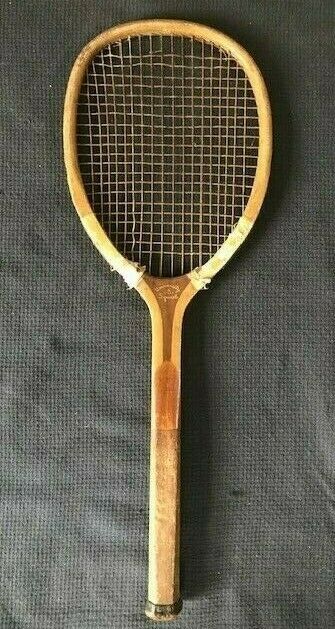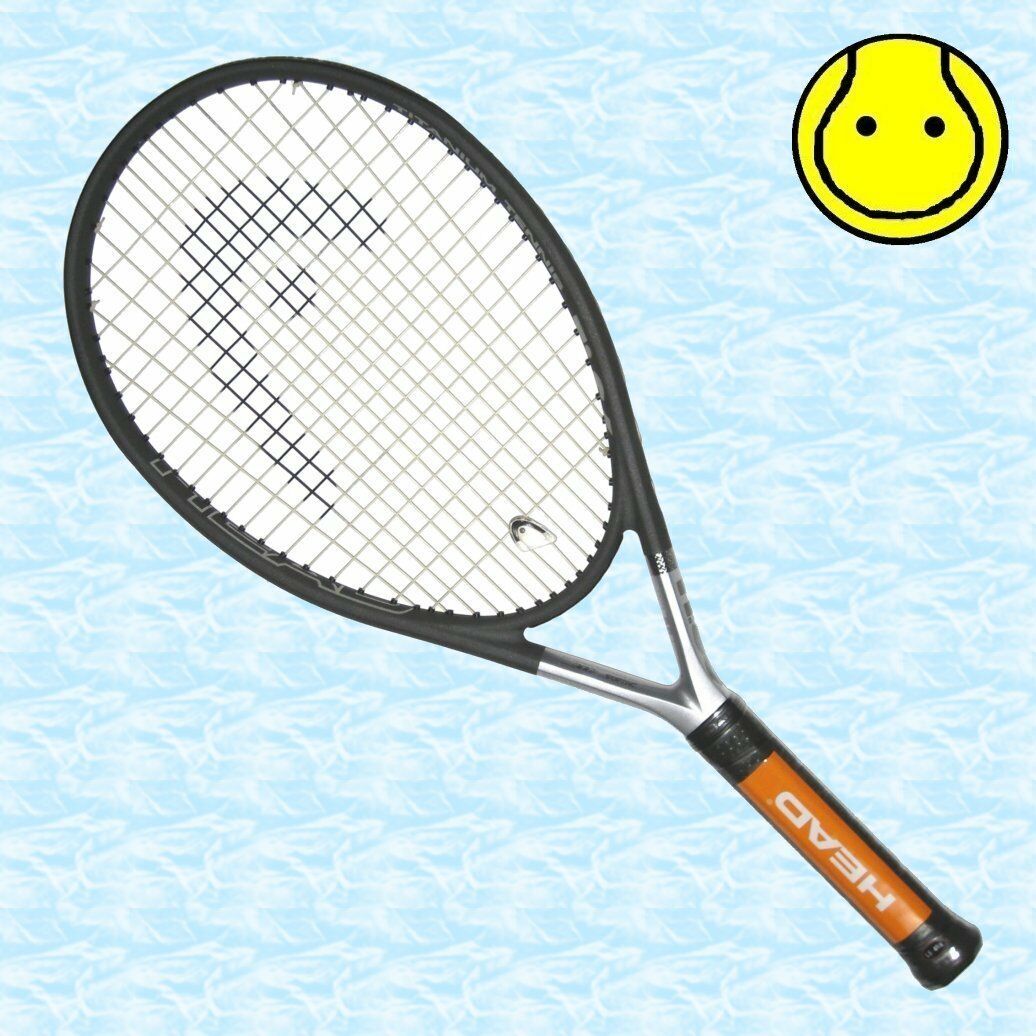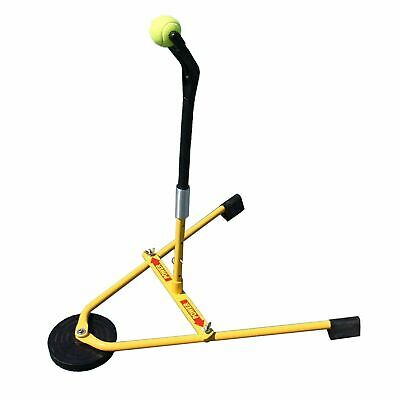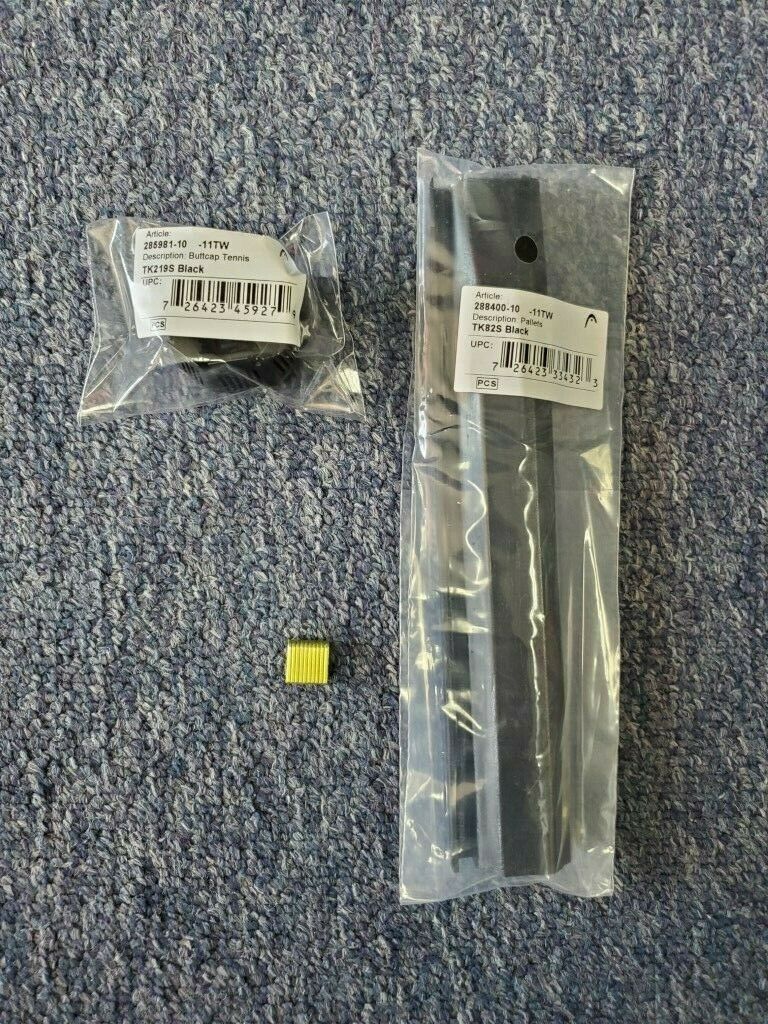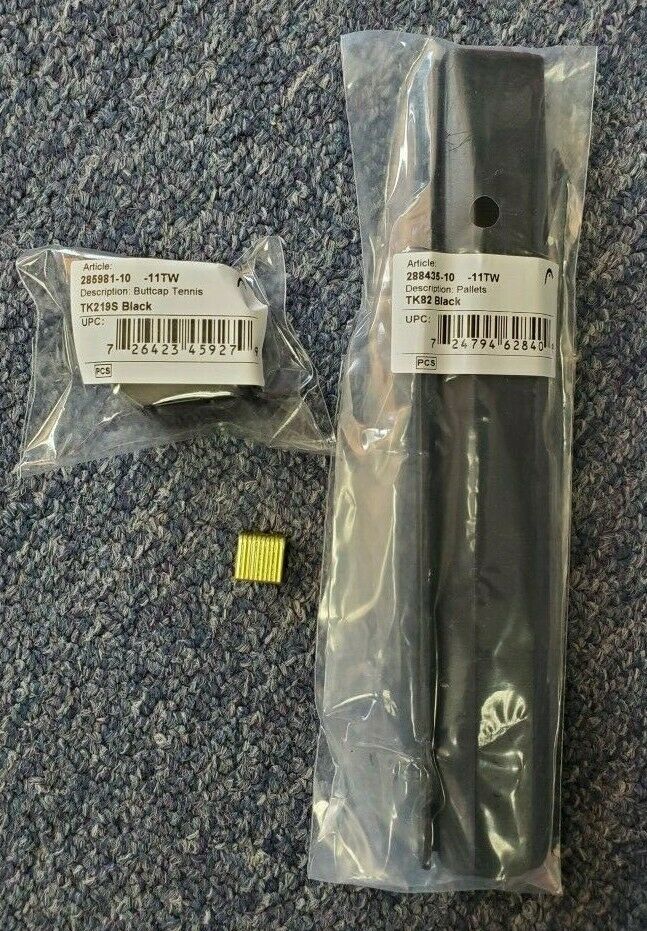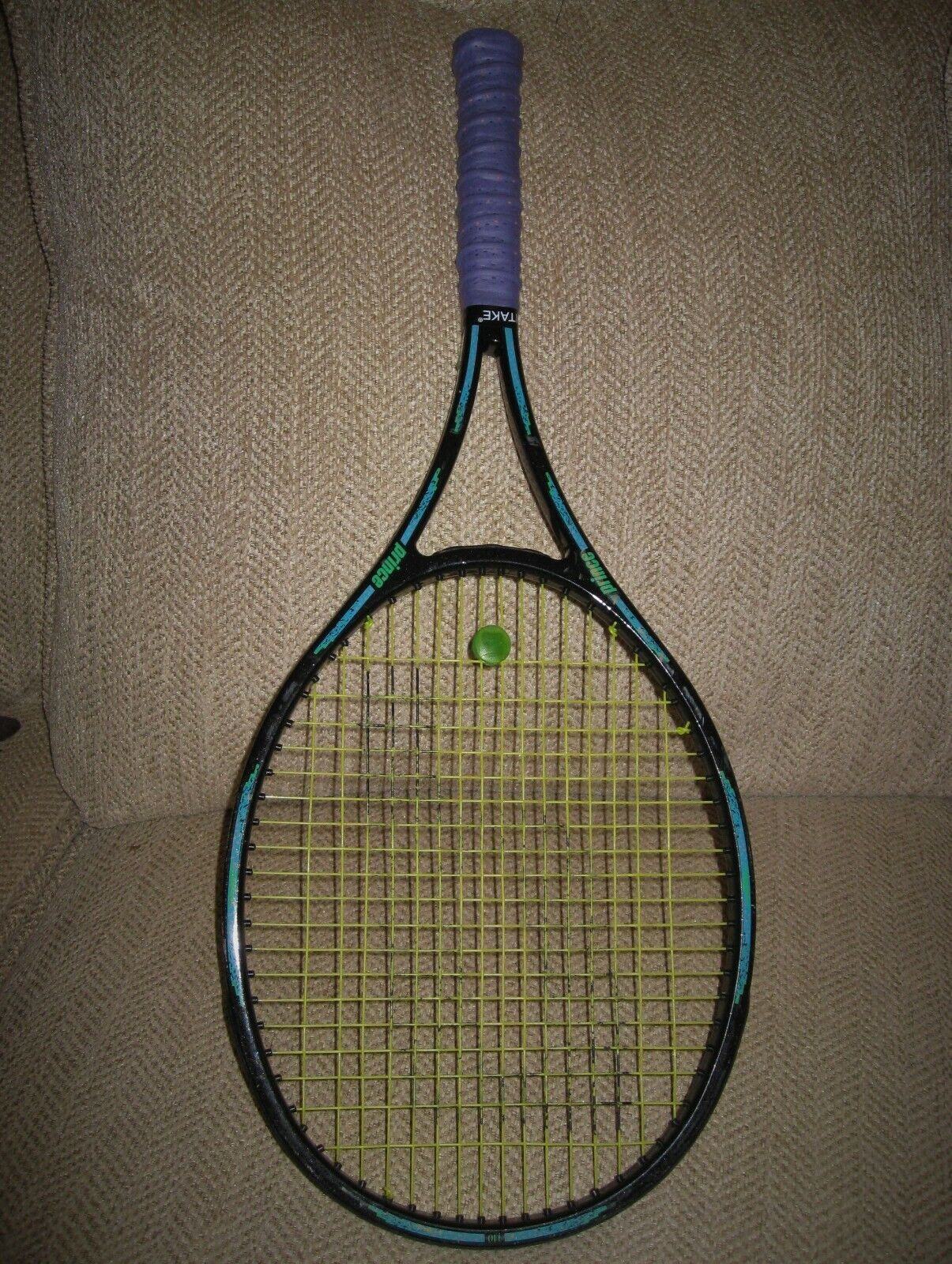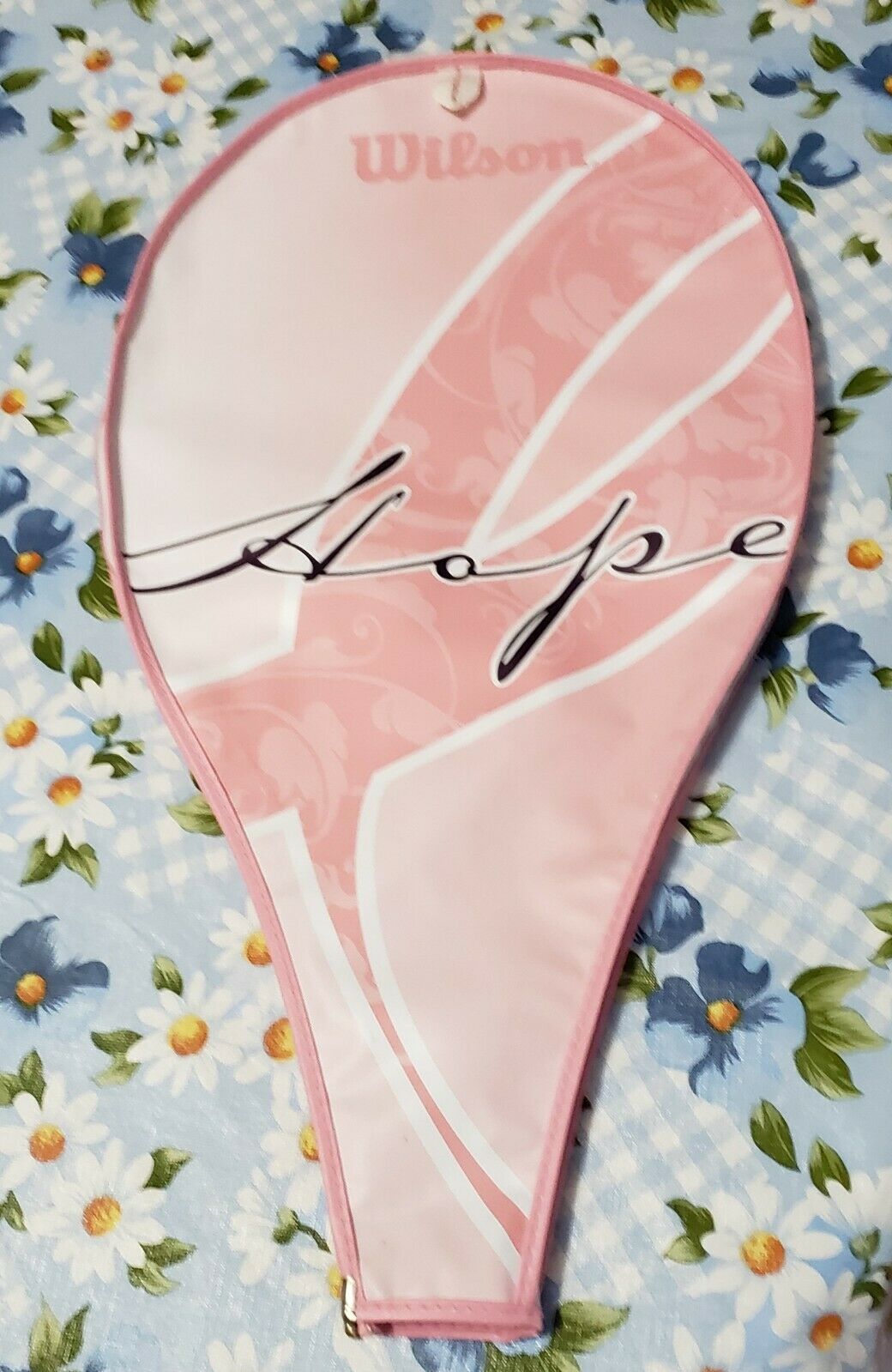-40%
Antique Rare ALEX TAYLOR " UNIVERSITY A MODEL SQUASH " Tennis Racquet Racket
$ 79.19
- Description
- Size Guide
Description
Exact Details are not always easily found on antique and vintage tennis racquets. Given that, I give you my best effort at describing each item. My goal is to provide photos and details as accurately as possible to give you the best opportunity to bid accordingly. Please, do not hesitate at all to ask questions.
I'm not quite sure how to explain this, but I've had this racquet for years and have always wondered exactly what it is. It looks much very much more like a tennis racquet than a squash racquet, but it has the model name "University A Model Squash." After having done some research, it looks possible that this may be a "Squash Tennis" racquet; my research says squash tennis is an American variant of squash, but played with a ball and racquets that are closer to the equipment used in lawn tennis, and with somewhat different rules. Required equipment is fairly simple and inexpensive - junior tennis racquets (this one is relatively small and light) and standard lawn tennis balls.
Spme information I've found in my research states: "
In decades past modified tennis balls were manufactured for the game. T
he games of squash racquets and its parent sport, Racquets, spread to America in the 1880's with the nation's first court built at St. Paul's School in Concord, New Hampshire. Due to a delay in shipping the proper racquets equipment, the boys used balls and racquets for the game of lawn tennis that had also been recently introduced to the country. In the 1890's both squash racquets and squash tennis had spread to adults in Boston and play started to become more formalized. In 1898 after the construction of a court at The Tuxedo Club in Tuxedo
Par
k, New York
, squash tennis became popular among members of New York society. Private courts were built on estates owned by such millionaires as
William C. Whitney
,
J.P. Morgan
,
and
Andrew Carnegie's
nephew George Lauder Carnegie. By 1905, the
Racquet and Tennis Club
, Harvard, Princeton,
nd Columbia Clubs in Manhattan had courts, as did Brooklyn's Crescent A. C. and the Heights Casino.
In 1911 the National Squash Tennis Association was founded and organized by the banker, John W. Prentiss, Harvard Club of New York. Rules, equipment, and court dimensions became formalized.
Briefly the sport gained popularity and some limited play in other cities such as Detroit, Buffalo, Chicago, Boston, Philadelphia, but soon squash racquets overshadowed squash tennis. But
in
New York City
the game maintained a strong following during the 1920s and 1930s. A decision to introduce a highly pressurized ball hastened the decline of the sport. A faster ball was preferred by advanced players, but it discouraged novices. In an effort to make the game more accessible, tournament play was authorized on squash racquets courts. But for many years the sport attracted few new players. During World War II the special ball was no longer manufac
tured, so advanced players started to lose interest.
T
he game is virtually extinct. There are no organized tournaments. The game is played on a regular basis only by about a dozen players at the Harvard Club in New York City; although longtime enthusiast Bill Rubin stated that there are a few young, very talented, new players."
Other research reports that "players use a lawn tennis racquet an inch shorter in the handle" which is what this racquet is.
That said, this racquet has all the hallmarks of being something other than a typical squash racquet, even if not a Squash Tennis racquet. Its 11 1/2 ounce weight is the first giveaway. Today, squash racquets from what I see have a maximum permitted weight of 9 ounces, but most have a weight between 5 & 5.3 ounces. And you'll see from one of the photos provided, there is a Taylor Squash Bat from 1916 "The University Model AA wedge throat", similar model name to the one listed here. Is the Model A perhaps older/younger than the Model AA, and why is it called a Squash Bat vs a Racquet? Its heritage through Alex Taylor being in New York City also gives more credence to the possibility. It has a beveled concave wedge which is laminated, and surrounded with support taping on the shoulder consistent with the period. There is some cracking and damage to the wedge on one side and one of the upper corners of the head (see pictures). Strings are overall intact, but one is loose where it enters the taping on the shoulder, which could indicate a breakdown below; rough/smooth strings on top are not intact. The shoulder taping is quite rough, see pictures. Frame is straight, butt cap is intact and identification on the bottom of the racquet is partially visible - see pictures. The racquet overall makes a stunning presentation, being something unusual and out of the ordinary.
Apologies, for I've never listed anything on ebay that I wasn't very sure of exactly what it is; or if I haven't I've opened it up to many questions. For this one, I'm going to have to open it up with an initial bid and ask that any bidders to do research beyond what I've done and bid or not bid accordingly.
Please ask as many questions as you can. It's definitely an interesting and mysterious racquet, hopefully some of you know more about this than I do!
Check out my other listings
.
